Sonos multi-room system
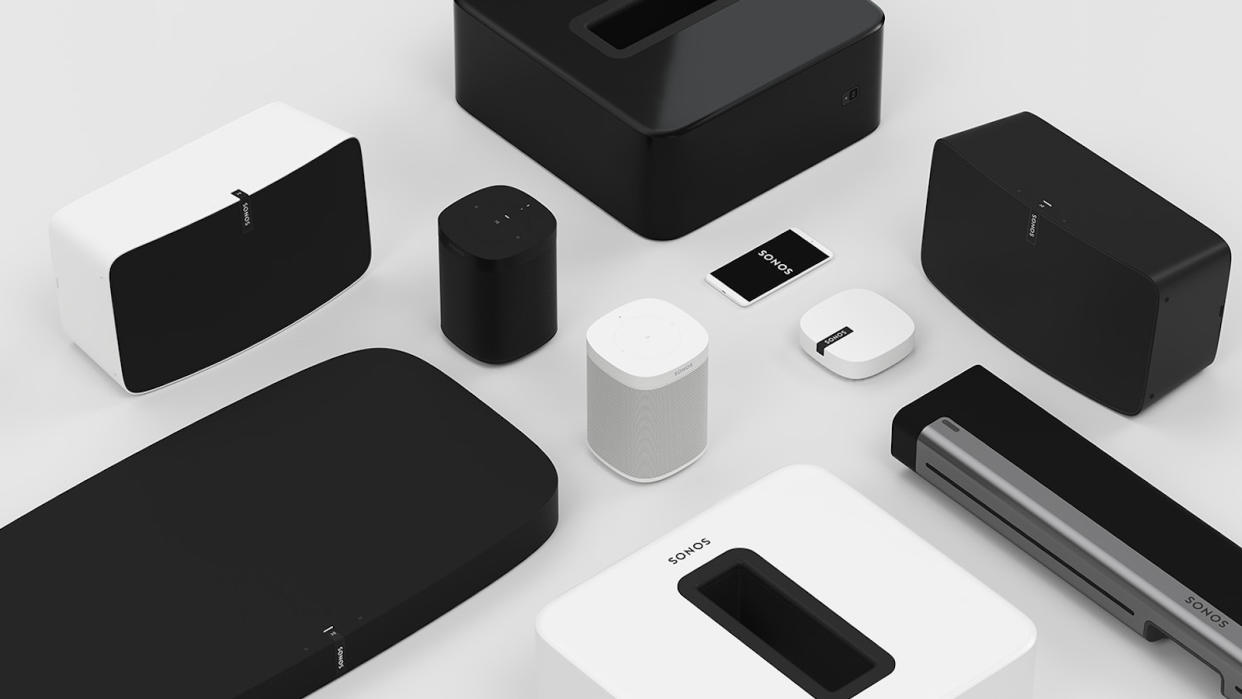
For years, Sonos has been synonymous with the concept of multi-room audio, so it’s hard to know which came first. At the very least, Sonos spotted a trend long before its competitors – at most, it’s responsible for making the market what it is today.
Sonos as a system has two big advantages – the breadth of choice and simplicity of use. In the time its rivals have been playing catch-up, Sonos has launched a whole family of products and got onside with a long list of streaming services, not to mention nailing the usability aspect of multi-room audio.
Speakers
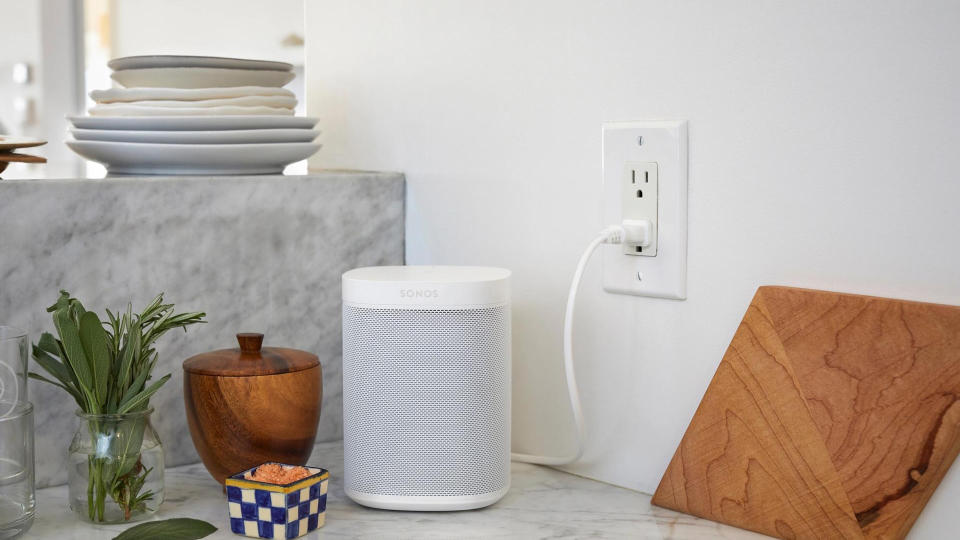
The most obvious way to introduce yourself to Sonos is with the latest Sonos Era 100 or the Sonos One wireless speaker (pictured, above) – or even the Sonos One SL, which simply omits microphones and therefore voice control functions. Matching the five-star performance of the legacy Play:1 pretty much step for step, the One builds on the latter’s feature list with built-in Alexa Voice Assistant and Google Assistant to become the company’s inaugural smart speaker offering.
It's a great little speaker in its own right. Controls on the speaker come via a touch-sensitive panel decorated with a circle of tiny, white LEDs and symbols. These represent play/pause, the microphone and Sonos’ now-familiar context-sensitive actions, while the white LEDs illustrate when Alexa is switched on. There's also a dedicated Pairing button, just above the ethernet socket.
The One produces a weighty, full-bodied and spacious sound that’s capable of going loud for a speaker this small. Voices are clearly projected, bass is solid, and treble is crisp and clean. It’s a surprisingly sophisticated sound, and one that’s natural and authentic.
That general sonic character also carries over to the far larger Five (formerly Play:5), but it’s able to produce a far bigger and bolder sound, thanks to its larger chassis and extra drivers: three 10cm mid-woofers sit below a trio of tweeters, one front-firing and two horned outwards for greater dispersion, and are powered by six matching Class D amplifiers.
This is a weighty performance that can easily fill a room without sacrificing the clarity or openness of the mid-range. It’s effortlessly listenable, with no hard or sharp edges to cause distraction.
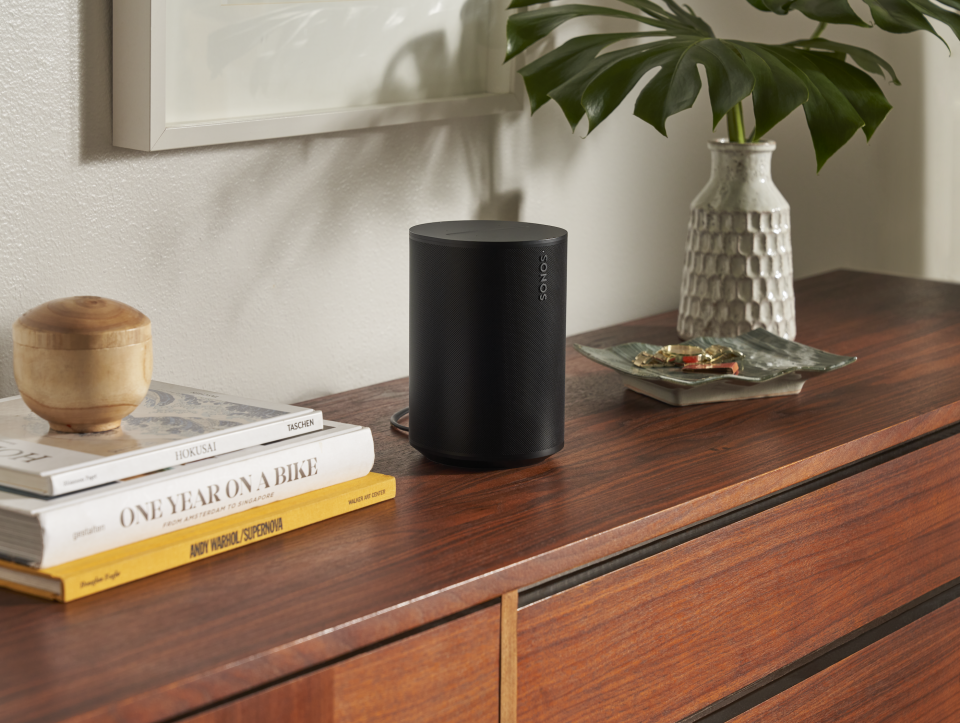
The latest Era speakers – the Sonos Era 100 (pictured, above), which effectively replaces the One with new stereo sound and Bluetooth streaming, and the premium Sonos Era 300 spatial audio speaker (pictured, below) – deliver an even better step-up in performance. While the One can now be found at a discount (and it's still a solid Sonos starter), the Era 100 is a terrific speaker in its own right and as part of a multi-room system. The sound is bigger and more detailed, the features and usability are further refined, and the price is still within reach of most. It's the ideal gateway speaker to the Sonos universe.
Go one step further and you've got the unusual design of the Era 300, which delivers a hugely expansive and convincing spatial audio performance with Dolby Atmos tracks from Amazon Music Unlimited and Apple Music. The expansive feature set is identical to the Era 100, but it offers an even more refined and more capable performance over Sonos's premium Five speaker. No wonder we gave it a What Hi-Fi? Award in 2023.
Sonos Era 100 vs Sonos One: which smart speaker should you buy?
Sonos Era 300 vs Sonos Five: which premium Sonos speaker is for you?
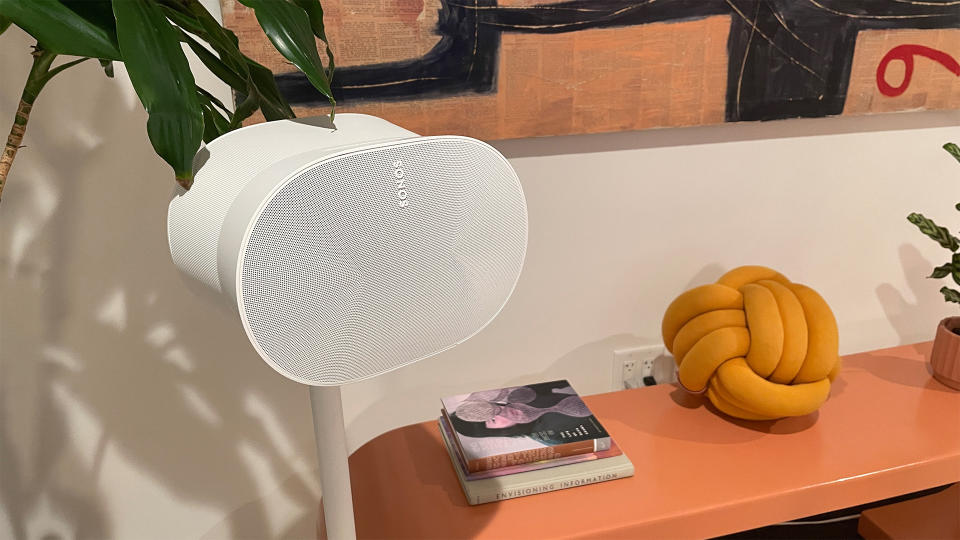
If you want to voice-control music in other rooms, specify where (eg. “Alexa, play Bowie in the lounge”) and the One will send music to the Sonos kit you’ve ascribed to that ‘zone’ – even a non-Alexa-enabled Sonos speaker, such as a PlayBar or Five. “Alexa, play Bowie everywhere” sets all your Sonos speakers to synchronised Ziggy Stardust mode.
A combination of noise-cancelling, something called “smart voice capture” and a custom-designed six-microphone array also ensures that she can always hear you.
Of course, you can also use Alexa on the Sonos speakers exactly as you do, say, an Amazon Echo Dot, so as well as playing music you can set timers and alarms, check the weather, and add items to your shopping list – small features, but useful nonetheless.
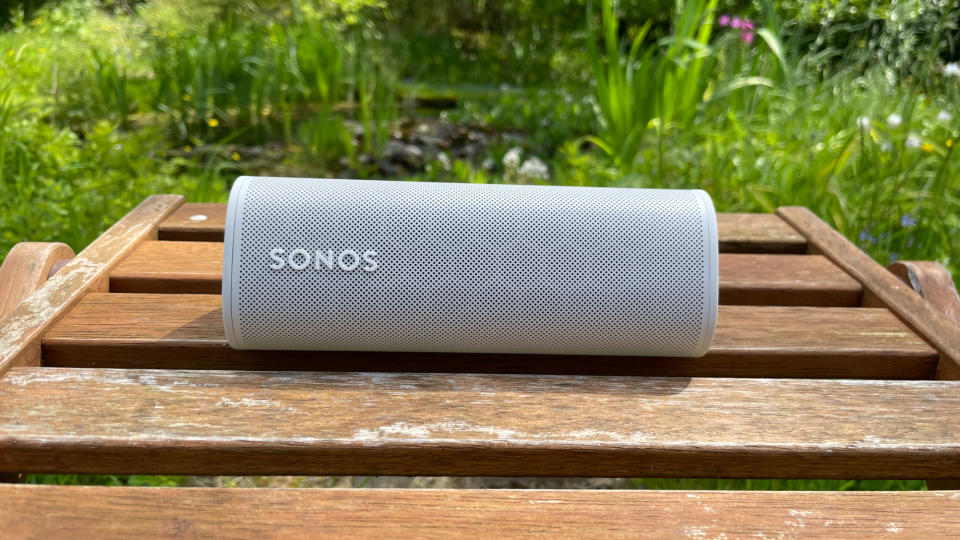
At the other end of the price spectrum is the Sonos Roam (and Roam SL – again, a microphone and voice control-less version). The cheapest Sonos speaker, it's also the first properly portable Bluetooth speaker in the range. We say 'properly' because the Sonos Move actually came before it but is bigger than the size traditionally associated with portable models.
Of course, you still get all the Sonos multi-room connectivity at home but now you can take the Sonos sound with you wherever you go, whether it's into the garden, to the park or on holiday (other not-inside-your-home options are available). It's solidly built and will survive water and dust, too, thanks to its IP67 rating.
The built-in battery is good for up to 10 hours of playback from a single charge, ensuring Bluetooth and AirPlay 2 wireless audio for a full day.
Sonically, it's good if not great, sounding punchy and delivering plenty of bass. For pure sound quality, there are better portable speakers out there at this price, but then again none of them has all the skills of a Sonos speaker.
Sonos encourages you to calibrate each speaker using the app’s built-in TruePlay feature, which measures pulses fired out from the drivers. It generally results in better performance, so it's a shame that, due to inconsistencies in Android devices’ microphones, only iOS devices can get the full-fat room correction. With the Era 100 and Era 300 speakers, there is now a TruePlay version for Android users.
There’s also a Loudness switch for each speaker, which is worth experimenting with. Turning it off can result in greater clarity and tighter bass, particularly if the speaker is placed in a corner, but it also reduces weight and scale.
Sonos Roam SL vs Sonos Roam: which Bluetooth speaker is best for you?
Sonos Roam vs Sonos Move: which portable speaker is better?
Sonos hi-fi
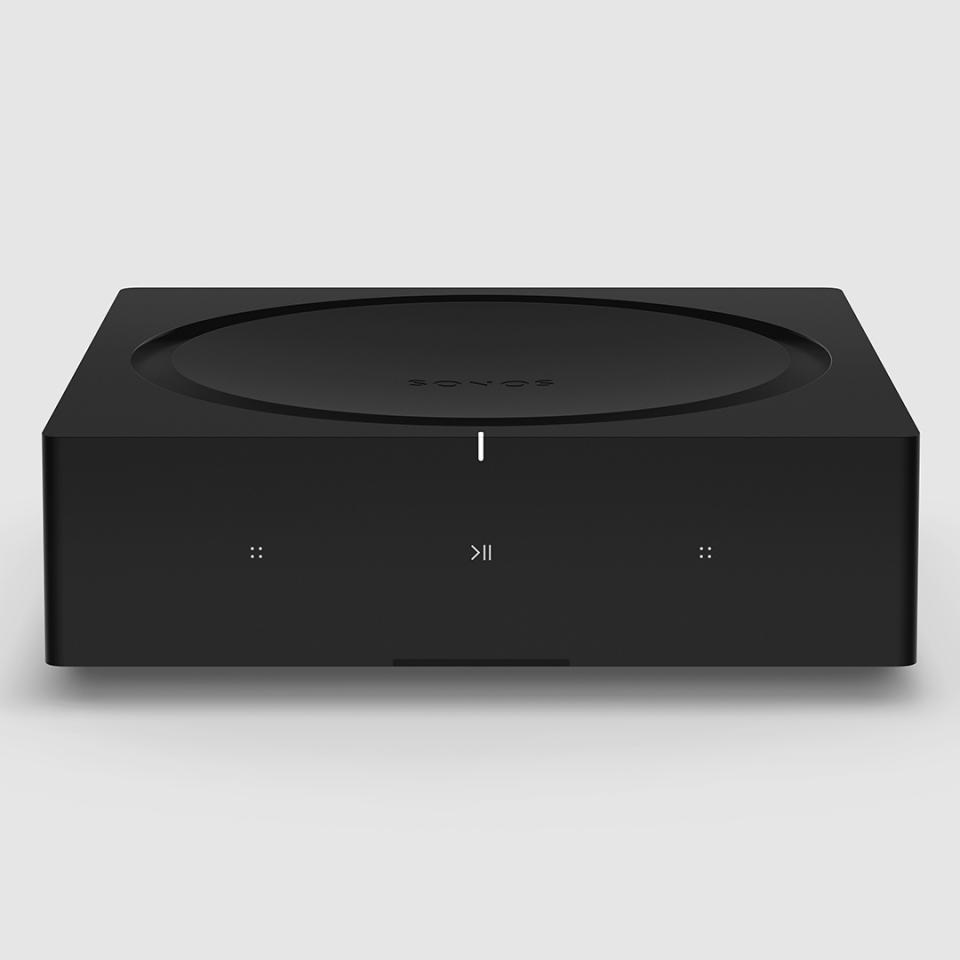
We’ve long enjoyed the Connect as Sonos’s means of connecting existing hi-fi systems to its multi-room network. The Connect:Amp was for a long time the company’s go-to powered version of the streamer, but the Sonos Amp is the latest version of this product. It's available in black and with three touch-sensitive ‘buttons’ on the front: one for play/pause and two that change use with context but are mainly for the volume.
The insides of the new Amp are densely packed, with no dead space. That, of course, creates a cooling problem, but the Amp is designed to bring in air from underneath and expel it from the top, all without the use of a fan.
In terms of character, the Amp paints very much with the same bold strokes as the rest of its family, revelling in forward-sounding presentations and dealing them with gusto and a more-than-respectable level of detail.
That’s not to say the Amp is overly energetic – it doesn’t attempt to force the issue with subtler tracks as some enthusiastically forward-sounding components can tend to do – but it doesn’t need asking twice to really throw the music at you.
What restricts it from being a class leader, regardless of the competition from Bluesound's range of products, such as the Powernode, is a relatively pedestrian sense of timing and dynamics.
Organisation is wavering only when an arrangement tests the Amp at its limits, and rhythmically it is far from inept, but there isn’t quite the musicality to offer tracks their due expression or drive beats with obvious impetus on leading notes.
As part of a Sonos network, it is an admirable performer, not least for its versatility; it just falls short in terms of hi-fi separates.
Sonos home cinema
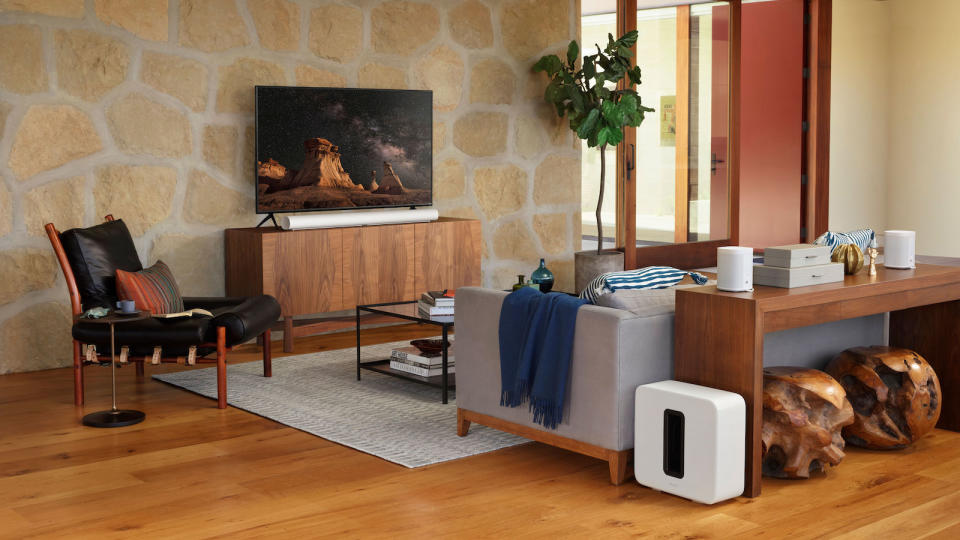
Sonos’s suite of home cinema components all share the character of the rest of the family. Further testament to their talents is their consistently high ratings in our stand-alone tests: the current Arc and Beam 2 have both gained not only five-star reviews but also What Hi-Fi? Awards, with the Beam 2 winning again in 2023.
The Arc may have arrived late to the Dolby Atmos soundbar party but it quickly proved to be one of the very best performance-per-pound soundbars you can buy. It's designed to partner bigger TVs than the more compact Beam. At 114cm (45"), it is a bit wider than a typical modern 49-inch TV and is proportionally best partnered with a 55-inch model.
At the back of the Arc are the power socket, an ethernet connection for wired networking, and a single HDMI port. An optical adapter is included for those with older TVs, but the intention is that you use HDMI and use the ARC/eARC (Audio Return Channel) functionality to get the sound from your TV to the Arc.
The Arc's Dolby Atmos soundfield is generated by 11 Class D digital amplifiers that power 11 custom drivers. Eight of those drivers are elliptical woofers evolved from those in the Beam (four along the front, two on top and one in each end), while the other three are silk-domed tweeters that are all built into the front but with two firing diagonally into the room. The Arc uses its array of speakers to bounce sound off your walls and ceiling to create a 3D audio effect, and the soundfield is once again tailored to your room using Sonos' Trueplay technology.
The Arc runs exclusively on the Sonos S2 platform, so all your other devices will need to be updated to S2 in order to work with the Arc, and it's worth remembering that some older Sonos devices are entirely incompatible with this latest software (and the benefits it brings).
Crucially, the Sonos Arc delivers one of the most convincing Atmos presentations of any soundbar we’ve heard. It's detailed and expansive, handling big dynamic shifts as well as it delivers more delicate sounds. There's weight and punch as well as clarity in the higher frequencies.
As for the Beam 2, it's more of the same but in a more compact package.
The new Beam not only lives up to the high bar set by its predecessor but exceeds it by a margin that more than justifies its higher cost. The decision by Sonos to use processing power and forward-facing drivers to recreate Dolby Atmos has paid off with more capable and effective handling of the format than many more expensive soundbars with upward-firing drivers.
The Sonos Beam Gen 2, much like the Arc, is the best Dolby Atmos soundbar at its price, and it elevates itself yet further with its streaming smarts, compact design and expert handling of motion, depth and space. Regardless of Atmos, it sounds incredible, confidently delivering deep bass, a refined, smooth treble, and a wide dynamic range.
Multi-room performance
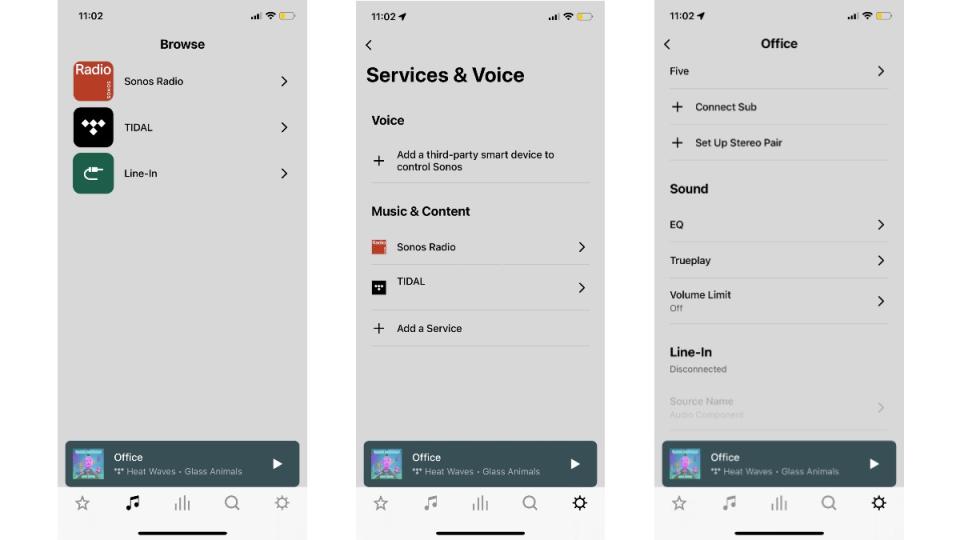
The Sonos app is a large part of the system’s charm. As well as walking you through set-up, it’s where control of your system takes place, enabling you to see what music is playing where and to group speakers together.
It also offers the widest choice of streaming service compatibility of any multi-room system, giving you access to all of your music in one place. Even Spotify is properly integrated into the app, where most rivals force you to use Spotify Connect. On Sonos though, that’s merely an option.
Having everything in one place is one of Sonos’s greatest strengths, largely because it enables genuine universal search. Search for an artist, album or track and Sonos will browse through all music services and local sources connected over a home network, such as iTunes libraries and NAS drives.
It’s a nice touch, especially when most competitors only search for one source at a time. You’re also able to build playlists and on-the-fly queues directly within Sonos, and again from multiple sources.
Thanks to the S2 update, Sonos filled the high-resolution gap that previously existed, streaming up to 24-bit/48kHz FLAC files courtesy of streaming services Qobuz and Amazon Music HD. Tidal is limited to lossless FLAC at 16-bit/44.1kHz, while the S2 platform supports FLAC and ALAC files in up to 24-bit depth from your music library. With the Era 300, you also get support for spatial audio with Dolby Atmos tracks on Amazon Music Unlimited and Apple Music.
Sonos supports Amazon Alexa and Google Assistant (the latter is not available in the Era speaker), and not only that but now has its own Sonos Voice Control with the wake word "Hey Sonos". Voice assistants are available on any Sonos product with microphones.
The constant updating of its app is a testament to Sonos’s dedication to endlessly improving, upgrading and evolving the offering, though how long Sonos S1 products will continue to be viable following the launch of S2 remains to be seen. For now, the two platforms don't talk to each other so you need to choose one or operate two apps, should you have a system of old and new products.
Verdict
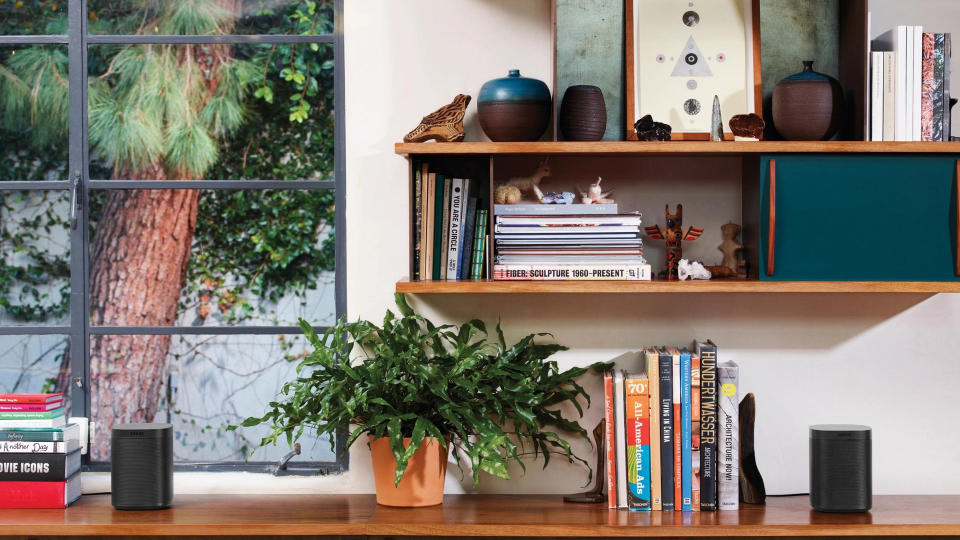
Despite being the first multi-room system to win a What Hi-Fi? Award, the company hasn't had things all its own way in recent years. The emergence of multi-room hi-fi and wireless speaker rivals, such as Amazon's Alexa-powered ecosystem, Bluesound and Audio Pro, plus the fact that multi-room is now achievable across a variety of products using Chromecast and AirPlay 2, has kept Sonos on its toes.
Sonos continues to deliver, though – and across popular product categories. The Era marks a whole new level of sonic performance, Roam has successfully added a portable Bluetooth speaker to the family, while the new Beam has brought excellent Atmos sound to a more affordable price.
And while the S2 update has marked the beginning of the end for some of the company's legacy products – unwelcome, if far from uncommon, in the tech world – it has brought with it some clear upsides for the latest Sonos devices.
Offering a full suite of good to great multi-room speakers for music and movies, we're happy to recommend Sonos to anyone eager to explore the world of whole-home wireless audio.
MORE:
Sonos deals: the cheapest price on every Sonos speaker
